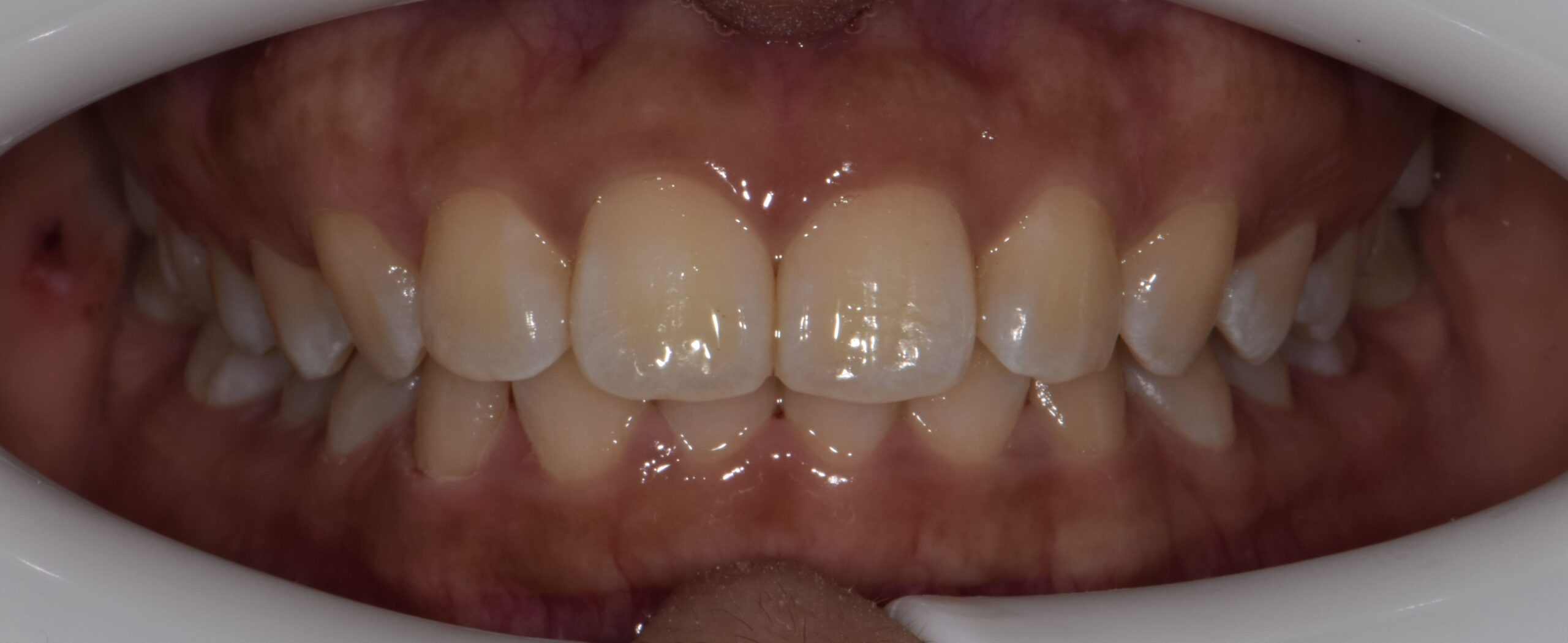A luxury of being a dentist is that I get to see patients of all ages. What continues to fascinate me is the opportunity to see the same oral condition in different mouths at different ages. This gives me a clearer picture of the future consequence if the problem in the mouth is left untreated. I would like to take you through a journey of one. It’s called a crossbite…
What is a crossbite?
In a normal bite, the upper teeth will come into contact with lower teeth with the tip of the upper teeth sitting more towards the cheek/lip side. You can say the upper teeth ‘cover’ the lower teeth and this allows normal sliding when we are chewing. An example is shown in the picture to the right.

A normal bite: the upper teeth cover the lower teeth
A crossbite is when the opposite happens for particular teeth. This usually occurs at young age, about the time when baby teeth change into adult teeth. There are many reasons why this might happen. A tooth may simply erupt in a slightly odd position or there’s an early loss of certain teeth which causes shifting of neighbouring teeth. The two photos below show a 10-year-old girl with a crossbite to the left of the picture. Another clue that she has a crossbite is that her lower jaw also shifts to the left side (to the side with crossbite).

Fast forward a few decades…
This man probably had his crossbite since he was a child and a few problems became apparent.

He, similar to the previous young girl, has a crossbite on the left side of the picture. His lower jaw shifted to the left and all the teeth on the left side erupted into crossbite, which locked his jaw into this position. Over time, this caused the canting or tilting of the whole jaw. Usually the most significant damage occurred where the crossbite “crossed over”. In this case, it’s near the front teeth slightly to the left. This is the area where the teeth locked and didn’t allow normal sliding of the jaw. The “lock” put more pressure and caused more wear and tear of teeth as the left upper front tooth became shorter than the right one. Directly underneath, there’s gum recession around the lower front teeth limited to the same area due to trauma. Not to mention that a lot of these patients suffer from headache as a result of constant clenching and locking of the jaw.
It’s mind boggling that little things can cause so much damage over time but the good news is the treatment is a lot simpler when it’s picked up earlier. As the old saying goes, prevention is better than the cure.
To your healthy smile.
Dr. Supa
Supa Dental, Melton.



